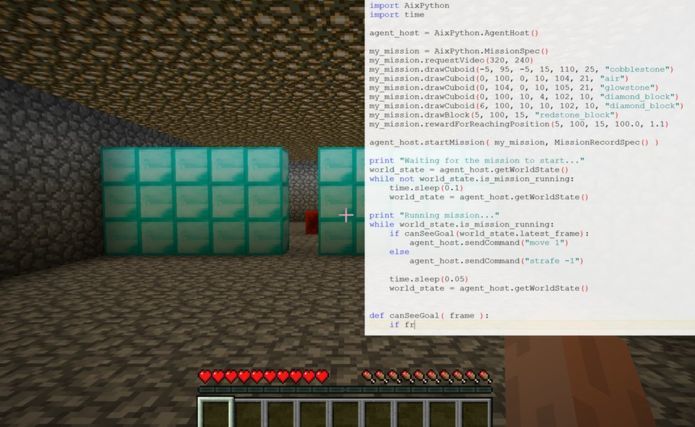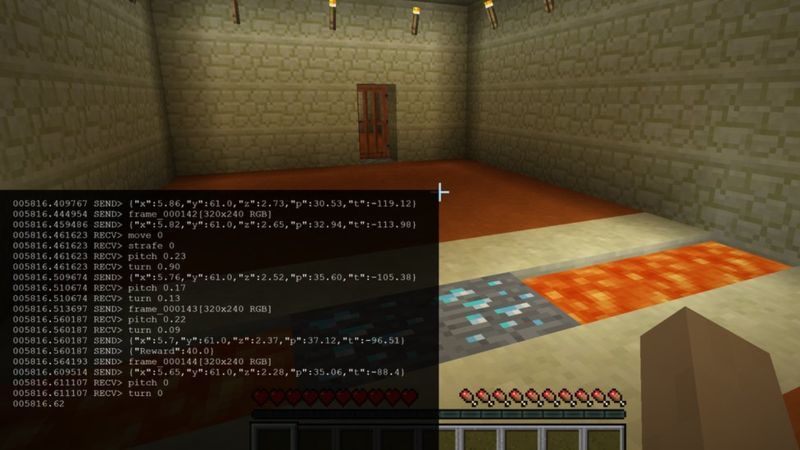Minecraft game will open for testing AI systems

The Minecraft Universe will soon become a testing ground for teaching artificial intelligence programs. Microsoft has announced that since July 2016 it has opened for public use the AIX platform, which is already being used to train neural networks in the Microsoft Research division. Testing AI systems in the Minecraft world will be cheaper than making a real robot, while Minecraft’s virtual world is “more difficult” than existing AI simulators.
Some experts agree that Minecraft and the AIX platform have a lot of potential: “It is very high level,” said Professor Jose Hernandez-Orallo from a small research team at the Technical University of Valencia, who gained access to a closed beta version. “There is nothing of the kind at the moment, and this is only the beginning, so I see many opportunities here.”
AIX software allows you to run your own program code that controls the behavior of a virtual character in Minecraft. At first, AI bots will be able to work only on personal computers of scientists, but in the future they plan to launch them on common servers to interact with real people.
')

The AIX program for Linux, Windows, and Mac OS will be distributed open source under a free license, so the researchers for the experiment need only buy a license for the game Minecraft itself.
Now people create amazing things in Minecraft, including copies of real cities and countries , and the operating components of personal computers ( ROM , processor ). It is difficult to even imagine what objects will appear in the virtual universe after the launch of automated bots there, especially when AI agents are allowed to interact with real people and accumulate experience from such communication, acting under the guise of a man.
Project manager Katja Hofmann from the Cambridge laboratory at Microsoft Research hopes that this will lead to the emergence of an AI of a human level that learns from its mistakes, can use sight and talk. In the future, trained systems from Minecraft will find application in robotics.
In addition, AIX will make AI research more attractive to the younger generation. They will grow up and continue research on a professional basis: “Children can create agents in a world that has already fascinated them, and play with them. We can expect that in 10-20 years we will need more specialists in the field of artificial intelligence, ”said Professor Hernandez-Orallo.
Source: https://habr.com/ru/post/391591/
All Articles